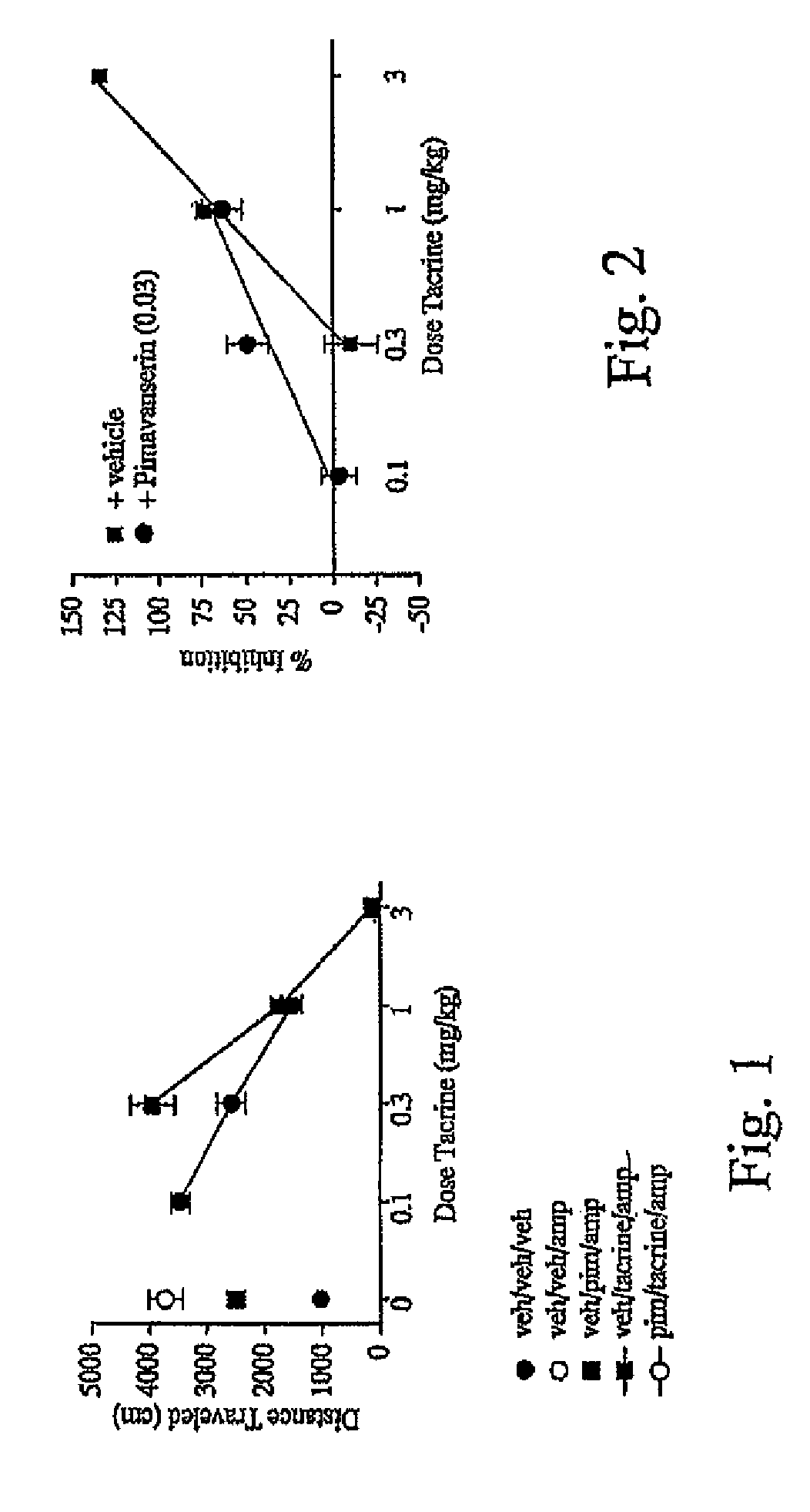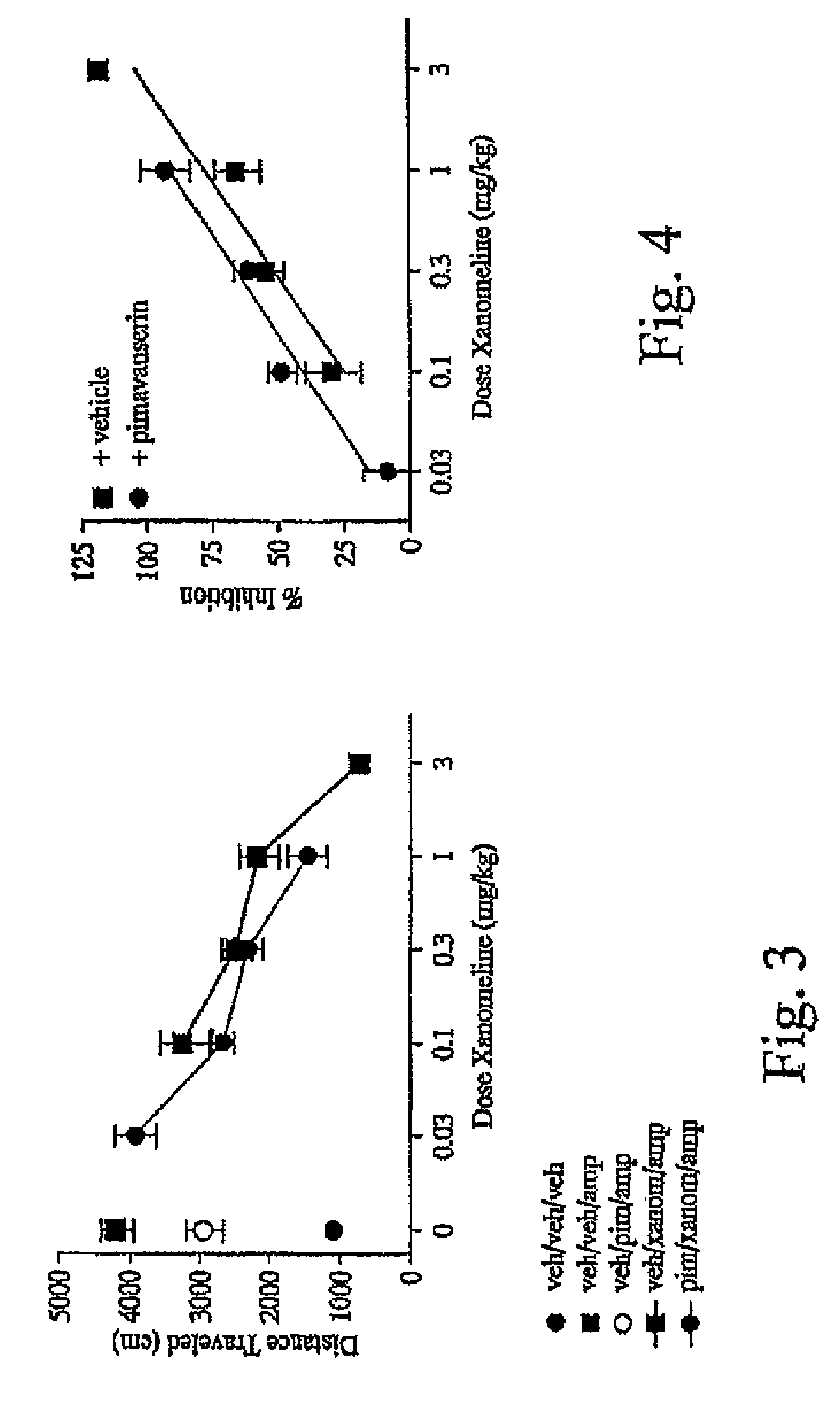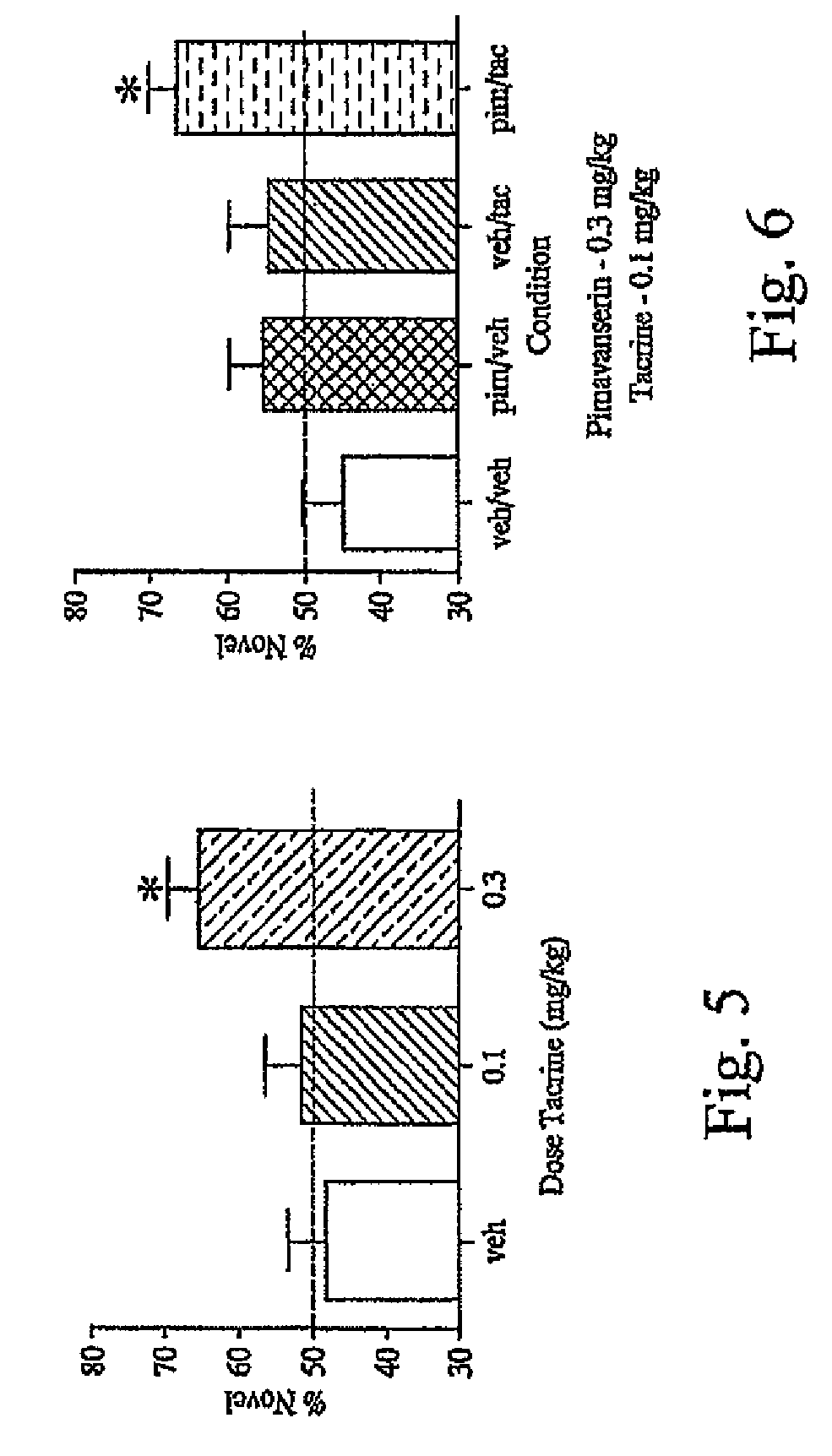Co-administration of pimavanserin with other agents
a technology of pimavanserin and other agents, applied in the field of chemistry and medicine, can solve the problems of frequent cholinergic side effects, significant hepatotoxicity, and inability to achieve the effect of augmenting the central cholinergic function through the administration of choline or phosphatidylcholin
- Summary
- Abstract
- Description
- Claims
- Application Information
AI Technical Summary
Benefits of technology
Problems solved by technology
Method used
Image
Examples
example 1
Amphetamine-Induced Hyperactivity with Tacrine
[0105]This study was conducted in acrylic chambers (42 cm×42 cm×30 cm) equipped with 16 infrared photobeams along each horizontal axis (front-to-back and side-to-side, from Accuscan Instruments, Inc., Columbus, Ohio). Mice were initially administered either vehicle (veh) or pimavanserin (0.03 mg / kg) 60 minutes prior to entering activity chambers. Vehicle or a drug (either tacrine or xanomeline) was injected 30 minutes prior to entering activity chambers. Amphetamine (3 mg / kg) was injected into mice 15 minutes prior to entering motor activity chambers. Mice had no prior exposure to the chambers and each dose combination was tested in separate groups of mice.
[0106]Activity was measured as total distance traveled (DT) in centimeters and was determined across a 15 minute session. Dose response curves were constructed for the drug in the presence of either vehicle or a fixed dose of pimavanserin. In order to generate dose-response curves, raw...
example 2
Novel Object Recognition
[0108]Subjects were male, C57 BK / 6 mice purchased from Harlan Laboratories, weighing 15-20 g upon arrival. Animals were housed 8 per cage with food and water available ad libitum. Animals were housed on a 12 hr light cycle (lights on 6 am) for 4-7 days prior to behavioral testing.
[0109]Novel object recognition (NOR) was conducted in a novel environment consisting of a white plastic tub measuring 45.7×33.7×19 cm. Prior to each trial the bottom of the tub was covered with a piece of plastic lined bench top paper. There were two sets of identical objects chosen so that when given an opportunity to explore, mice would evenly divide exploration time between the objects. “A” objects were yellow, ceramic, 12-sided ramekins measuring 4 cm high×7 cm diameter. “B” objects were 8×8×4 cm stainless steel, 4-sided ramekins.
[0110]At the beginning of each test day, animals were placed in groups of 6 into clean cages. Testing was conducted in three phases: acclimation, sample...
example 3
Hyperactivity Study with an Amyloid Protein
[0118]This study was conducted in acrylic chambers (42 cm×42 cm×30 cm) equipped with 16 infrared photobeams along each horizontal axis (front-to-back and side-to-side, from Accuscan Instruments, Inc. (Columbus, Ohio)). Subjects were mice receiving ICV infusion of amyloid β protein fragment (25-35) or ICV infusion of saline (sham) for 7-10 days. This procedure has been shown to result in the formation of amyloid plaques and impaired cognition, thus simulating the effects of Alzheimer's disease.
[0119]An amphetamine-induced hyperactivity study was conducted on the subjects. Subjects were injected with amphetamine (3 mg / kg) or vehicle 15 minutes prior to entering motor activity chambers. Activity was measured as a total distance traveled (DT) in centimeters (cm) and was determined in 20 minute increments across a 60 minute session. The results of this study are shown in FIG. 7.
[0120]FIG. 7 shows distance traveled as a function of time. Among th...
PUM
| Property | Measurement | Unit |
|---|---|---|
| chemical shifts | aaaaa | aaaaa |
| flow rate | aaaaa | aaaaa |
| flow rate | aaaaa | aaaaa |
Abstract
Description
Claims
Application Information
 Login to View More
Login to View More - R&D
- Intellectual Property
- Life Sciences
- Materials
- Tech Scout
- Unparalleled Data Quality
- Higher Quality Content
- 60% Fewer Hallucinations
Browse by: Latest US Patents, China's latest patents, Technical Efficacy Thesaurus, Application Domain, Technology Topic, Popular Technical Reports.
© 2025 PatSnap. All rights reserved.Legal|Privacy policy|Modern Slavery Act Transparency Statement|Sitemap|About US| Contact US: help@patsnap.com



